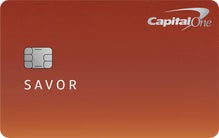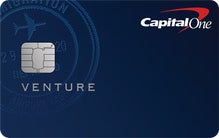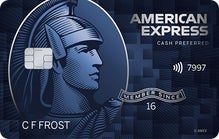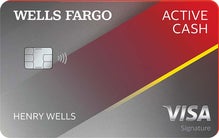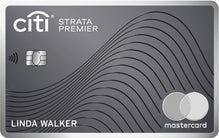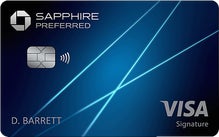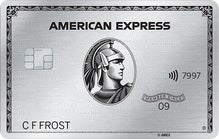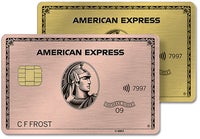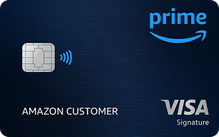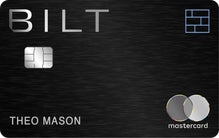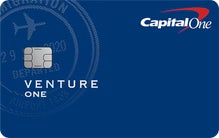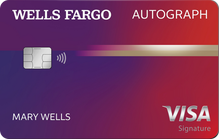Best rewards credit cards of January 2025
- • Credit card strategy
- • Credit card comparisons
- • Rewards credit cards
- • Travel credit cards
- • Credit cards
- • Rewards credit cards
- • Rewards credit cards
- • Travel credit cards
- • Credit cards
- • Rewards credit cards
Advertiser Disclosure: The listings that appear on the website are from credit card companies from which Bankrate receives compensation. This compensation may impact how and where products appear on this site (including, for example, the order in which they appear). This site does not include all credit card companies or all available credit card offers. Here's an explanation for and how we rate our cards.
- Capital One Savor Cash Rewards Credit Card: Best for entertainment
- Capital One Venture Rewards Credit Card: Best for travel bonus
- Blue Cash Preferred® Card from American Express: Best for groceries
- Wells Fargo Active Cash® Card: Best for flat-rate cash rewards
- Citi Strata Premier℠ Card: Best for hotel bookings
- Chase Sapphire Preferred® Card: Best starter travel card
- The Platinum Card® from American Express: Best for luxury travel
- American Express® Gold Card: Best for foodies
- Capital One Venture X Rewards Credit Card: Best for affordable travel perks
- Discover it® Cash Back: Best for category variety
- Prime Visa: Best for online shopping
- Bilt Mastercard®: Best for paying rent
- Capital One VentureOne Rewards Credit Card: Best no-annual-fee travel card
- Wells Fargo Autograph℠ Card: Best for commuters
- Citi Custom Cash® Card: Best for gas
How we make money
You have money questions. Bankrate has answers. Our experts have been helping you master your money for over four decades. We continually strive to provide consumers with the expert advice and tools needed to succeed throughout life’s financial journey.
Bankrate follows a strict editorial policy, so you can trust that our content is honest and accurate. Our award-winning editors and reporters create honest and accurate content to help you make the right financial decisions. The content created by our editorial staff is objective, factual, and not influenced by our advertisers.
We’re transparent about how we are able to bring quality content, competitive rates, and useful tools to you by explaining how we make money.
Bankrate.com is an independent, advertising-supported publisher and comparison service. We are compensated in exchange for placement of sponsored products and services, or by you clicking on certain links posted on our site. Therefore, this compensation may impact how, where and in what order products appear within listing categories, except where prohibited by law for our mortgage, home equity and other home lending products. Other factors, such as our own proprietary website rules and whether a product is offered in your area or at your self-selected credit score range, can also impact how and where products appear on this site. While we strive to provide a wide range of offers, Bankrate does not include information about every financial or credit product or service.
Bankrate has partnerships with issuers including, but not limited to, American Express, Bank of America, Capital One, Chase, Citi and Discover.
Filter by
A FICO score/credit score is used to represent the creditworthiness of a person and may be one indicator to the credit type you are eligible for. However, credit score alone does not guarantee or imply approval for any financial product.
Showing 15 results
Best for entertainment
Cardholder rating
This rating reflects the average overall score given by real cardholders in response to questions about this card's benefits, rewards, customer service, and data security.
Bankrate score
Our writers, editors and industry experts score credit cards based on a variety of factors including card features, bonus offers and independent research. Credit card issuers have no say or influence on how we rate cards. If you'd like to learn more about how we rank our cards, explore our ranking methodology here.
A FICO score/credit score is used to represent the creditworthiness of a person and may be one indicator to the credit type you are eligible for. However, credit score alone does not guarantee or imply approval for any financial product.
on Capital One's secure site
See Rates & FeesIntro offer
$200 Cash Back after you spend $500 on purchases within 3 months from account opening
Earn $200 Cash Back
Rewards rate
8% Cash Back on Capital One Entertainment purchases, 5% Cash Back on hotels and rental cars booked through Capital One Travel (terms apply), 3% Cash Back at grocery stores (excluding superstores like Walmart® and Target®), on dining, entertainment and popular streaming services, 1% Cash Back on all other purchases
1% - 8%
Annual fee
$0
Regular APR
19.24% - 29.24% (Variable)
Why you'll like this: Its boosted cash back rate in popular spending categories makes it a great standalone option.
Best for travel bonus
Cardholder rating
This rating reflects the average overall score given by real cardholders in response to questions about this card's benefits, rewards, customer service, and data security.
Bankrate score
Our writers, editors and industry experts score credit cards based on a variety of factors including card features, bonus offers and independent research. Credit card issuers have no say or influence on how we rate cards. If you'd like to learn more about how we rank our cards, explore our ranking methodology here.
A FICO score/credit score is used to represent the creditworthiness of a person and may be one indicator to the credit type you are eligible for. However, credit score alone does not guarantee or imply approval for any financial product.
on Capital One's secure site
See Rates & FeesIntro offer
75,000 miles once you spend $4,000 on purchases within 3 months from account opening
Earn 75,000 miles
Rewards rate
5 Miles per dollar on hotels, vacation rentals and rental cars booked through Capital One Travel, 2 Miles per dollar on every purchase, every day
2 Miles - 5 Miles
Annual fee
$95
Regular APR
19.99% - 29.24% (Variable)
Why you'll like this: It boasts solid short- and long-term value with its flat rewards rate and new welcome offer, which offers a terrific return on spend.
Best for groceries
Cardholder rating
This rating reflects the average overall score given by real cardholders in response to questions about this card's benefits, rewards, customer service, and data security.
Bankrate score
Our writers, editors and industry experts score credit cards based on a variety of factors including card features, bonus offers and independent research. Credit card issuers have no say or influence on how we rate cards. If you'd like to learn more about how we rank our cards, explore our ranking methodology here.
A FICO score/credit score is used to represent the creditworthiness of a person and may be one indicator to the credit type you are eligible for. However, credit score alone does not guarantee or imply approval for any financial product.
on American Express's secure site
See Rates & Fees, Terms ApplyIntro offer
Earn a $250 statement credit after you spend $3,000 in eligible purchases on your new Card within the first 6 months.
Earn $250
Rewards rate
6% Cash Back at U.S. supermarkets on up to $6,000 per year in purchases (then 1%). 6% Cash Back on select U.S. streaming subscriptions. 3% Cash Back on transit including taxis/rideshare, parking, tolls, trains, buses and more. 3% Cash Back at U.S. gas stations, 1% Cash Back on other purchases
1% - 6%
Annual fee
$0 intro annual fee for the first year, then $95.
APR
18.24%-29.24% Variable
Why you'll like this: It boasts the highest cash back rate available at U.S. supermarkets.
Best for flat-rate cash rewards
Bankrate score
Our writers, editors and industry experts score credit cards based on a variety of factors including card features, bonus offers and independent research. Credit card issuers have no say or influence on how we rate cards. If you'd like to learn more about how we rank our cards, explore our ranking methodology here.
A FICO score/credit score is used to represent the creditworthiness of a person and may be one indicator to the credit type you are eligible for. However, credit score alone does not guarantee or imply approval for any financial product.
on Wells Fargo's secure site
See Rates & FeesIntro offer
Earn a $200 cash rewards bonus after spending $500 in purchases in the first 3 months
$200 cash rewards
Rewards rate
Earn unlimited 2% cash rewards on purchases
2%
Annual fee
$0
Regular APR
19.24%, 24.24%, or 29.24% Variable APR
Best for hotel bookings
Bankrate score
Our writers, editors and industry experts score credit cards based on a variety of factors including card features, bonus offers and independent research. Credit card issuers have no say or influence on how we rate cards. If you'd like to learn more about how we rank our cards, explore our ranking methodology here.
A FICO score/credit score is used to represent the creditworthiness of a person and may be one indicator to the credit type you are eligible for. However, credit score alone does not guarantee or imply approval for any financial product.
on Citi's secure site
See Rates & FeesIntro offer
For a limited time, earn 75,000 bonus ThankYou® Points after spending $4,000 in the first 3 months of account opening, redeemable for $750 in gift cards or travel rewards at thankyou.com.
75,000 bonus points
Rewards rate
Earn 10 Points per $1 spent on Hotels, Car Rentals, and Attractions booked on CitiTravel.com. Earn 3 Points per $1 on Air Travel and Other Hotel Purchases, at Restaurants, Supermarkets, Gas and EV Charging Stations. Earn 1 Point per $1 spent on all other purchases
1X - 10X
Annual fee
$95
Regular APR
20.24% - 28.24% (Variable)
Why you'll like this: It has a valuable welcome offer and an annual hotel credit that can easily offset its annual fee.
Best for point value
Cardholder rating
This rating reflects the average overall score given by real cardholders in response to questions about this card's benefits, rewards, customer service, and data security.
Bankrate score
Our writers, editors and industry experts score credit cards based on a variety of factors including card features, bonus offers and independent research. Credit card issuers have no say or influence on how we rate cards. If you'd like to learn more about how we rank our cards, explore our ranking methodology here.
A FICO score/credit score is used to represent the creditworthiness of a person and may be one indicator to the credit type you are eligible for. However, credit score alone does not guarantee or imply approval for any financial product.
on Chase's secure site
Intro offer
Earn 60,000 bonus points after you spend $4,000 on purchases in the first 3 months from account opening.
60,000 bonus points
Rewards rate
5x on travel purchased through Chase Travel℠. 3x on dining, select streaming services and online groceries. 2x on all other travel purchases. 1x on all other purchases.
1x - 5x
Annual fee
$95
Regular APR
20.74% - 27.74% Variable
Why you'll like this: It boasts terrific rewards value with its annual bonus points, practical bonus categories, high-value points and redemption flexibility.
Best for luxury travel
Cardholder rating
This rating reflects the average overall score given by real cardholders in response to questions about this card's benefits, rewards, customer service, and data security.
Bankrate score
Our writers, editors and industry experts score credit cards based on a variety of factors including card features, bonus offers and independent research. Credit card issuers have no say or influence on how we rate cards. If you'd like to learn more about how we rank our cards, explore our ranking methodology here.
A FICO score/credit score is used to represent the creditworthiness of a person and may be one indicator to the credit type you are eligible for. However, credit score alone does not guarantee or imply approval for any financial product.
on American Express's secure site
See Rates & Fees, Terms ApplyIntro offer
Earn 80,000 Membership Rewards® Points after you spend $8,000 on eligible purchases on your new Card in your first 6 months of Card Membership.
Earn 80,000 points
Rewards rate
Earn 5X Membership Rewards® Points for flights booked directly with airlines or with American Express Travel up to $500,000 on these purchases per calendar year. Earn 5X Membership Rewards® Points on prepaid hotels booked with American Express Travel.
5X - 5X
Annual fee
$695
APR
See Pay Over Time APR
Why you'll like this: It’s perfect for luxury-minded travelers who spare no expense when booking airfare or hotels and want the most with every experience.
Best for food and travel
Cardholder rating
This rating reflects the average overall score given by real cardholders in response to questions about this card's benefits, rewards, customer service, and data security.
Bankrate score
Our writers, editors and industry experts score credit cards based on a variety of factors including card features, bonus offers and independent research. Credit card issuers have no say or influence on how we rate cards. If you'd like to learn more about how we rank our cards, explore our ranking methodology here.
A FICO score/credit score is used to represent the creditworthiness of a person and may be one indicator to the credit type you are eligible for. However, credit score alone does not guarantee or imply approval for any financial product.
on American Express's secure site
See Rates & Fees, Terms ApplyIntro offer
Earn 60,000 Membership Rewards® points after you spend $6,000 on eligible purchases on your new Card in your first 6 months of Card Membership.
60,000 points
Rewards rate
Earn 4X Membership Rewards® points per dollar spent on purchases at restaurants worldwide, on up to $50,000 in purchases per calendar year, then 1X points for the rest of the year. Earn 4X Membership Rewards® points per dollar spent at US supermarkets, on up to $25,000 in purchases per calendar year, then 1X points for the rest of the year. Earn 3X Membership Rewards® points per dollar spent on flights booked directly with airlines or on AmexTravel.com. Earn 2X Membership Rewards® points per dollar spent on prepaid hotels and other eligible purchases booked on AmexTravel.com. Earn 1X Membership Rewards® point per dollar spent on all other eligible purchases.
1X - 4X
Annual fee
$325
APR
See Pay Over Time APR
Why you'll like this: Along with its terrific perks for foodies, it offers valuable rewards on everyday spending.
Best for affordable travel perks
Cardholder rating
This rating reflects the average overall score given by real cardholders in response to questions about this card's benefits, rewards, customer service, and data security.
Bankrate score
Our writers, editors and industry experts score credit cards based on a variety of factors including card features, bonus offers and independent research. Credit card issuers have no say or influence on how we rate cards. If you'd like to learn more about how we rank our cards, explore our ranking methodology here.
A FICO score/credit score is used to represent the creditworthiness of a person and may be one indicator to the credit type you are eligible for. However, credit score alone does not guarantee or imply approval for any financial product.
on Capital One's secure site
See Rates & FeesIntro offer
Earn 75,000 bonus miles when you spend $4,000 on purchases in the first 3 months from account opening, equal to $750 in travel
Earn 75,000 miles
Rewards rate
10 Miles per dollar on hotels and rental cars booked through Capital One Travel, 5 Miles per dollar on flights and vacation rentals booked through Capital One Travel, 2 Miles per dollar on every purchase, every day
2 Miles - 10 Miles
Annual fee
$395
Regular APR
19.99% - 29.24% (Variable)
Why you'll like this: You’ll get access to a handful of the most useful and valuable travel perks out there without breaking the bank.
Best for category variety
Cardholder rating
This rating reflects the average overall score given by real cardholders in response to questions about this card's benefits, rewards, customer service, and data security.
Bankrate score
Our writers, editors and industry experts score credit cards based on a variety of factors including card features, bonus offers and independent research. Credit card issuers have no say or influence on how we rate cards. If you'd like to learn more about how we rank our cards, explore our ranking methodology here.
A FICO score/credit score is used to represent the creditworthiness of a person and may be one indicator to the credit type you are eligible for. However, credit score alone does not guarantee or imply approval for any financial product.
on Discover's secure site
See Rates & FeesIntro offer
Intro Offer: Unlimited Cashback Match for all new cardmembers–only from Discover. Discover will automatically match all the cash back you’ve earned at the end of your first year! There’s no minimum spending or maximum rewards. You could turn $150 cash back into $300.
Cashback Match
Rewards rate
Earn 5% cash back on everyday purchases at different places you shop each quarter like grocery stores, restaurants, gas stations, and more, up to the quarterly maximum when you activate. Plus, earn unlimited 1% cash back on all other purchases.
1% - 5%
Annual fee
$0
Regular APR
18.24% - 27.24% Variable APR
Why you'll like this: It offers the best rewards rate you can get in several popular categories over the course of the year.
Best for online shopping
Bankrate score
Our writers, editors and industry experts score credit cards based on a variety of factors including card features, bonus offers and independent research. Credit card issuers have no say or influence on how we rate cards. If you'd like to learn more about how we rank our cards, explore our ranking methodology here.
A FICO score/credit score is used to represent the creditworthiness of a person and may be one indicator to the credit type you are eligible for. However, credit score alone does not guarantee or imply approval for any financial product.
on Amazon's secure site
Intro offer
Get a $100 Amazon Gift Card instantly upon approval exclusively for Prime members
Get a $100 Amazon Gift Card
Rewards rate
Prime Card Bonus: Earn 10% back or more on a rotating selection of items and categories on Amazon.com with an eligible Prime membership, Earn unlimited 5% back at Amazon.com, Amazon Fresh, Whole Foods Market, and on Chase Travel purchases with an eligible Prime membership, Earn unlimited 2% back at gas stations, restaurants, and on local transit and commuting (including rideshare), Earn unlimited 1% back on all other purchases
1% - 10%
Annual fee
$0
Regular APR
19.74% - 28.49% Variable
Why you'll like this: It boasts a terrific rewards rate on Amazon purchases, which can cover a slew of household items, entertainment, gifts, food and more.
Best for paying rent
Cardholder rating
This rating reflects the average overall score given by real cardholders in response to questions about this card's benefits, rewards, customer service, and data security.
Bankrate score
Our writers, editors and industry experts score credit cards based on a variety of factors including card features, bonus offers and independent research. Credit card issuers have no say or influence on how we rate cards. If you'd like to learn more about how we rank our cards, explore our ranking methodology here.
A FICO score/credit score is used to represent the creditworthiness of a person and may be one indicator to the credit type you are eligible for. However, credit score alone does not guarantee or imply approval for any financial product.
on Bilt's secure site
See Rates & FeesIntro offer
Intro offer is not available for this Bilt credit card.
N/A
Rewards rate
3x points on dining, 2x points on travel, 1x points on other purchases, Earn 1x points on rent without the transaction fee, up to 100,000 points in a calendar year. When you use the card 5 times each statement period using your Bilt Mastercard, you'll earn points on rent and qualifying net purchases.
1X Points - 3X Points
Annual fee
$0
Regular APR
See Terms
Best no-annual-fee travel card
Cardholder rating
This rating reflects the average overall score given by real cardholders in response to questions about this card's benefits, rewards, customer service, and data security.
Bankrate score
Our writers, editors and industry experts score credit cards based on a variety of factors including card features, bonus offers and independent research. Credit card issuers have no say or influence on how we rate cards. If you'd like to learn more about how we rank our cards, explore our ranking methodology here.
A FICO score/credit score is used to represent the creditworthiness of a person and may be one indicator to the credit type you are eligible for. However, credit score alone does not guarantee or imply approval for any financial product.
on Capital One's secure site
See Rates & FeesIntro offer
Earn a bonus of 20,000 miles once you spend $500 on purchases within 3 months from account opening, equal to $200 in travel
Earn 20,000 miles
Rewards rate
5 Miles per dollar on hotels and rental cars booked through Capital One Travel, 1.25 Miles per dollar on every purchase, every day
1.25 Miles - 5 Miles
Annual fee
$0
Regular APR
19.24% - 29.24% (Variable)
Why you'll like this: Earning travel rewards is simple and low risk thanks to its solid flat rewards rate and $0 annual fee.
Best for everyday travel
Bankrate score
Our writers, editors and industry experts score credit cards based on a variety of factors including card features, bonus offers and independent research. Credit card issuers have no say or influence on how we rate cards. If you'd like to learn more about how we rank our cards, explore our ranking methodology here.
A FICO score/credit score is used to represent the creditworthiness of a person and may be one indicator to the credit type you are eligible for. However, credit score alone does not guarantee or imply approval for any financial product.
on Wells Fargo's secure site
See Rates & FeesIntro offer
Earn 20,000 bonus points when you spend $1,000 in purchases in the first 3 months - that's a $200 cash redemption value.
20,000 bonus points
Rewards rate
Earn unlimited 3X points on restaurants, travel, gas stations, transit, popular streaming services and phone plans. Earn 1X points on other purchases
1X - 3X
Annual fee
$0
Regular APR
19.24%, 24.24%, or 29.24% Variable APR
Best for gas
Citi Custom Cash® Card
*The information about the Citi Custom Cash® Card has been collected independently by Bankrate.com. The card details have not been reviewed or approved by the card issuer.
Bankrate score
Our writers, editors and industry experts score credit cards based on a variety of factors including card features, bonus offers and independent research. Credit card issuers have no say or influence on how we rate cards. If you'd like to learn more about how we rank our cards, explore our ranking methodology here.
A FICO score/credit score is used to represent the creditworthiness of a person and may be one indicator to the credit type you are eligible for. However, credit score alone does not guarantee or imply approval for any financial product.
Intro offer
Earn $200 in cash back after you spend $1500 on purchases in the first 6 months of account opening. This bonus offer will be fulfilled as 20,000 ThankYou® points, which can be redeemed for $200 cash back.
$200
Rewards rate
Earn 5% cash back on purchases in your top eligible spend category each billing cycle, up to the first $500 spent, 1% cash back thereafter. Special Travel Offer: Earn an additional 4% cash back on hotels, car rentals, and attractions booked on Citi Travel℠ portal through 6/30/2026. Earn unlimited 1% cash back on all other purchases.
1% - 5%
Annual fee
$0
Regular APR
18.24% - 28.24% (Variable)
Why you'll like this: It offers a top cash back rate in several everyday categories and is flexible enough to fit with nearly any rewards strategy.
Remove a card to add another to compare
Remove a card to add another to compare
Compare Bankrate’s top rewards credit cards
| Our picks for | Rewards highlights | Learn more | ||
|---|---|---|---|---|
Entertainment + Best overall |
| $0 | ||
Travel bonus |
| $95 | ||
Groceries |
| $0 intro annual fee for the first year, then $95. | ||
Flat-rate cash rewards |
| $0 | ||
Hotel bookings |
| $95 |
The information about the My GM Rewards® Mastercard® has been collected independently by Bankrate.com. The card details have not been reviewed or approved by the card issuer.
*Bankrate’s points and miles valuations are based on an average of the issuer’s five highest-value transfer partners (if available).
Expert advice for choosing the best rewards card
Navigating the wide range of rewards card options available can be difficult but tips and insights from Bankrate experts can help you narrow your options and choose a card that’s right for you. We asked Bankrate writer, Garrett Yarbrough, about his own reward card journey and his advice has provided some key takeaways for choosing a rewards card.
-
Figure out where you spend the most each month
You can match your spending habits with a fitting rewards card once you know your major monthly categories, where you often shop and how much you typically spend. Keep in mind, some cards have spending caps on bonus categories which drop the rewards rate you earn to 1 percent after you spend a certain amount in a select category within a timeframe. This is often up to $1,500 per quarter or up to $6,000 per year, which could make a card with no rewards spending cap more valuable depending on how much you typically spend.
“My biggest expenses tend to be everyday purchases like groceries, gas and dining. I love to cook, too, so I’d probably lean on a grocery rewards card more than one with a restaurant category,” explains Yarbrough. “On paper, my spending habits meant a card with a high rewards rate at grocery stores would be helpful — especially since I don’t spend enough for a typical rewards spending cap to get in the way. But in practice, I’d likely rack up more rewards with a flat-rate card since grocery store categories usually don’t include wholesale clubs and superstores like Walmart.”Learn more: How to choose a credit card for everyday spending
-
Consider effort versus rewards
Some cards are valuable because of their simplicity, but others have complicated terms for earning rewards, such as spending caps or requirements. Overall, there are three main types of rewards credit cards:
- Flat-rate rewards cards: The easiest to manage since they earn rewards at the same rate on almost all purchases (usually 1.5 percent or 2 percent back). They’re a great fit if you value simplicity but cards with tiered rates can be more rewarding.
- Tiered category cards: These are great standalone cards since they earn anywhere from 2 percent to 6 percent rewards in popular bonus categories like groceries, dining and travel but often lack value for less common spending categories.
- Rotating category cards: You can earn chart-topping 5 percent rewards on categories that change each quarter, but these high-maintenance options may be better suited as supplementary cards for rewards strategists.
The right card for you will reward you at a high rate in your most common spending categories and without much additional effort. Pick the card with a rewards program that matches the amount of effort you’re comfortable with.
-
Determine how you’d like to redeem your rewards
Cash back cards are generally easiest if you want to use your rewards to fuel your everyday spending. If you don’t mind strategizing and complicating your rewards experience, you could earn more than the standard 1 cent per point or mile through a travel rewards card with redemption options like transfer partners.
Learn more: How to maximize your credit card rewards -
Look at the card's fees
Foreign transaction fees and APR are worth keeping an eye on in case you need to use your card abroad or carry a balance in a pinch, but the annual fee is the most important. You'll need to decide whether the card’s benefits and potential rewards can help offset the yearly cost. This was less of an issue for Yarbrough: “APRs weren’t a huge concern since I already had a low-interest card from my credit union and I avoid carrying a balance, so I focused on rewards.”
Generally, it’s a good idea to pay your balance in full every month to avoid snowballing interest charges that will quickly outpace the rewards you earn.
-
Consider intro APR offers or sign-up bonuses
Many no-annual-fee rewards cards carry sign-up bonuses worth around $200 (usually after spending $500 to $1,000 in the first three months), plus 12- to 15-month 0 percent intro APR periods on balance transfers and new purchases. Although premium rewards cards typically don’t carry intro APR offers, they often pack stronger sign-up bonuses worth $600 to $750+ (usually after spending $4,000 in the first three to six months).
Short-term value isn’t everything, but above-average offers can give a card an edge if you prioritize earning rewards, paying off debt or the middle-ground: a shorter intro APR with rewards. Just make sure you have a plan beforehand to pay off your balance on time or meet the spending requirement without overspending.
-
Factor in valuable perks
Perks that come with a card can play a key role in determining its overall value — ideally recouping the annual fee with valuable benefits without dipping into your hard-earned rewards. Many premium cards carry flashy perks like annual travel credits, airport lounge access and automatic loyalty status, but be sure to read the fine print and calculate whether you’ll actually get enough value out of these perks to consistently offset the yearly cost.
“Knowing I wanted a future-proof, flat-rate rewards card with diverse redemption options and plenty of pairing opportunities helped me quickly narrow my search to the Chase Freedom Unlimited®,” Yarbrough notes. “The Freedom Unlimited card’s trip cancellation and interruption insurance plus limited-time rideshare and delivery service benefits added enough extra personal value to give it a leg up over similar cards for me.”
Learn more: Top credit card perks for 2024 -
Consider future pairing opportunities
If you’re planning on expanding your card roster, knowing how to best pair your cards can help you make your decision. For example, if you’re planning to get a premium card for your frequent hotel stays later but you’re torn between the Citi Double Cash® Card and Wells Fargo Active Cash® Card now, it makes sense to choose the Double Cash card since the Citi Strata Premier℠ Card is a stronger combo for your needs than the Active Cash and Wells Fargo Autograph Journey℠ Card.
Garrett kept his rewards card endgame in mind when choosing the Freedom Unlimited: “I can eventually boost the value of the Freedom Unlimited card’s rewards by adding the Chase Sapphire Preferred® Card to my wallet and redeeming points for travel. Until then, the Freedom Unlimited gives me a stellar foundation to build my rewards strategy.”
Staff Picks: Our experts' favorite rewards programs
Ana Staples
Lead writer, Credit cards
“I have the Capital One Venture X Rewards Credit Card, which earns incredibly flexible travel rewards. I'm not big on rewards transfers, so I appreciate that Capital One miles hold consistent value whether I book travel through the issuer's portal or use miles to cover recent travel purchases. Plus, I convert my Capital One Savor Cash Rewards Credit Card’s cash back into miles to earn free travel faster. It's really simple and convenient!"
Garrett Yarbrough
Writer, Credit cards
“I base my cards strategy around earning flexible rewards on everyday spending while minimizing the number of cards I need to use. In all my years of reviewing credit cards, I’ve found the Chase Ultimate Rewards program still strikes the best balance between versatility and value. It’s hard to beat a program that offers top-shelf rewards value through transfer partners, a full 1-cent-per-point cash back redemption value and a unique rewards value boost toward issuer-booked travel.”
Ryan Flanigan
Writer, Credit cards
“I like to maximize my rewards on every purchase, no matter how large or small. I get the best value from Chase Ultimate Rewards points, particularly when transferring to World of Hyatt or Southwest Airlines rewards. Whether it's spending towards an annual bonus or using the best bonus multiplier for almost any category, my arsenal of Chase cards bring the largest possible return for the best possible value. Combining my points boosts the value earned by each card, making my Chase cards a well-oiled rewards machine that facilitates great travel experiences for my family.”
What people say
If you browse various credit card forums, you’ll see there are two types of rewards cardholders: optimizers, who value simplicity and stick to just one or two cards, and maximizers, who enjoy strategizing to earn the most rewards — even if that means tracking bonus categories and juggling multiple cards.
Along with preferring to keep things simple, optimizers focus mostly on a card’s long-term value.
“Start first with your natural spending habits and find a [credit card] that gives you NET benefit (rewards minus [annual fee], if applicable) over your current set up,” recommends InitiativeSimilar435, a top 1 percent poster in the Reddit’s r/CreditCards subreddit. “Don't let a card dictate how you spend or the banks win and you lose.”
Optimizers in credit card forums tend to recommend cards such as the Citi Custom Cash Card and Chase Freedom cards thanks to their flexible rewards programs and low fees. However, higher-tier travel cards can also appeal to optimizers — as long as the card offers valuable perks and practical rewards categories that justify their annual fees. For example, the American Express Gold is often recommended as a standalone card thanks to its annual statement credit benefits and high rewards rate in everyday bonus categories like supermarket and restaurant purchases.
Meanwhile, maximizers tend to stack multiple high-earning cards with different perks and bonus categories to ensure they’re taking advantage of every rewards opportunity. In forums like Doctor of Credit, you’ll find users who continually apply for new cards to grab exciting new offers or sign-up bonuses. Many of these folks carry dozens of cards. Favorites include the Chase Sapphire and Freedom cards, American Express Gold and Platinum cards and the Discover it® Cash Back. Many also carry dedicated hotel and airline credit cards that offer brand-specific perks and rewards.
Such an approach isn’t for the faint of heart. It requires plenty of effort to juggle a large number of cards and discipline to know when to apply or hold off to protect your credit score.
“We often remind each other that ‘Credit is a marathon, not a Sprint,’ to try to pace ourselves,” says Aim_High, a Super Contributor at the myFICO forum, in a thread called “2025: Setting Your >2025< Annual Card Strategy”. “Periodically, we may look on with horror (or envy) as someone tries to get away with a monster App Spree. We know that's not really the way to build good credit. Overly-seeking credit can be addictive and counterproductive to finances and FICO.”
Offer insights: What is currently a “good” card?
To help you make the best decision, below, our experts break down what you can expect from different types of rewards cards — and what makes a “good” credit card offer.
-
- Cash back cards are often your best choice to save money on day-to-day purchases. They’re more likely to earn at least 3 percent back on a well-rounded roster of everyday categories like groceries, gas, dining, transit or drugstores. Plus, some cash back cards have rare categories that other rewards cards lack, such as online shopping, home improvement, wholesale clubs, entertainment, utilities, gym memberships and specific retailers.
- Cash back cards often lack notable perks beyond their rewards, but some may offer annual credits, rewards rates or complimentary subscriptions with rideshare, food delivery or streaming services for a limited time.
- No-annual-fee cash rewards card welcome bonuses are typically on par with the typical $200 no-annual-fee card intro bonus value, but premium cash reward card offers are usually worth just $250 to $300 — which is often less valuable than offers from point- and mile-earning rewards cards with a similar annual fee.
- Rewards strategists may need to turn to point-based travel cards with a cash back redemption option if they want premium-grade cash rewards. Otherwise, the only major premium cash back cards are the Blue Cash Preferred® Card from American Express and Capital One Spark Cash Plus.
- The most versatile cash back cards earn rewards that can be pooled with premium travel cards from the same issuer, such as Chase Ultimate Rewards cards and Citi ThankYou Points cards. Rewards programs like these can elevate your rewards’ value through eligible travel and transfer partner redemptions.
Learn more: How to choose a cash back credit card -
There are two main types of travel rewards credit cards: co-branded and general-purpose.
Co-branded travel cards
- Co-branded travel cards offer unique perks and boosted rewards on purchases with specific airlines or hotel brands, typically earning points or miles unique to that brand. This makes them less flexible than general travel cards.
- They often offer perks you can’t get with many general-purpose travel cards, such as automatic and expedited loyalty status, discounts and other privileges with that specific airline or hotel brand. For example, airline cards may offer complimentary access to the airline’s airport lounges, priority boarding or companion airfare certificates. Meanwhile, hotel cards may provide complimentary free nights, credits for hotel purchases and automatic room upgrades.
- Although many hotel cards pack high rewards rates, Bankrate’s point and mile valuations appraise most major hotel rewards program points at less than 1 cent per point on average — less than the average value of most general-purpose travel cards rewards and many airline rewards program rewards (depending on the booking).
General-purpose travel cards
- General-purpose travel cards earn rewards that aren’t tied to a single airline or hotel brand. You can often earn more valuable rewards on a wider variety of everyday and travel purchases with these cards. Some cards even let you transfer points or miles to a partner loyalty program. With the right transfer partner, your points could be worth around 2 cents each on average. However, some rewards programs may net you less than 1 cent per point for some redemption options.
- They’re among the best cards on the market if you’re looking for valuable perks. On top of travel insurance, some general-purpose travel cards carry hundreds of dollars worth of benefits like annual travel credits, expedited airport security screening service credits, and comprehensive airport lounge access perks.
- Premium general-purpose travel cards charge annual fees anywhere from $95 to $695. Although several cards carry enough practical perks to offset the cost, some of the cards’ annual credits and benefits may be too niche for the average traveler to comfortably offset the fee without going out of their way.
- Cash back cards can often be more lucrative or flexible than no-annual-fee travel cards. Many of these entry-level options don’t carry notable travel perks, and no-annual-fee travel cards can typically only redeem rewards for up to 1 cent per point or mile since few can use transfer partners.
- Co-branded travel cards offer unique perks and boosted rewards on purchases with specific airlines or hotel brands, typically earning points or miles unique to that brand. This makes them less flexible than general travel cards.
-
- Business rewards cards earn cash back, points or miles on common business expenses, like office supplies, advertising services or travel.
- These cards sometimes carry perks like free employee cards, annual software or service credits, high spending limits and big sign-up bonuses.
Learn more: How to choose a business credit card -
- Most rewards cards with 0 percent intro APR offers are no-annual-fee cards with 15-month offers on purchases and balance transfers (although 12-month offers aren’t uncommon). The Amex Blue Cash Preferred is perhaps the only major premium card with an intro APR offer.
- Most intro APR-focused rewards cards earn cash back, although a few no-annual-fee travel cards offer a solid 0 percent intro APR on purchases and balance transfers for 12 to 15 months.
- Although you won’t be able to get a rewards card with a chart-topping 0 percent intro APR for 21 months, the Discover it® Chrome and Citi Double Cash® Card pack the longest offers if earning rewards is a deal-breaker.
-
- Several secured cards earn quality rewards rates (typically cash back), even if you have a low credit score or no credit history at all. In fact, secured cards like the Capital One Quicksilver Secured Cash Rewards Credit Card and the Bank of America® Customized Cash Rewards Secured Credit Card carry rewards rates on par with their full-fledged counterparts.
- There are credit-building rewards cards that don’t require a security deposit, but the rewards rates and waived deposits may not offset the typically higher fees. Plus, a secured rewards card can eventually refund your security deposit after enough on-time payments — often without the hefty annual fees.
- Credit-building rewards cards typically don’t offer sign-up bonuses, but there’s often no (or a low) annual fee. However, popular student credit cards typically charge minimal fees, carry sign-up bonus rewards and pack strong rewards rates. If you’re trying to establish your credit and you qualify for a student credit card, those are likely the best rewards card options available without becoming an authorized user on someone’s card.
Looking for a particular type of rewards credit card?
Our data: Low approval rates in spring, summer 2024
A 2024 Bankrate survey found that credit card applicants are still facing stiff approval odds since issuers tightened underwriting in 2023. December’s rate cut and the expectation of continuing cuts could change the credit card landscape a bit, but it may be a while before cardholders feel the effects.
We dug into our proprietary data on the approval rates of Bankrate’s top rewards cards. Our data on Bankrate credit card applications shows that the average approval rate for rewards cards peaked in February 2024 at about 68 percent. However, this rate dropped sharply to 54 percent in March, and by July 2024, it had gone down to 47 percent. This data covers both flat-rate and category rewards cards.
Even relatively new cards like the Citi Strata Premier Card and Wells Fargo Autograph Journey Card experienced sharp drops in approvals. Both launched in May 2024, with the Citi Strata approving 60 percent of Bankrate applicants and the Wells Fargo Autograph Journey approving almost 55 percent of applicants. However, in July, these cards’ approval rates were down to 34 percent and 46 percent, respectively.
While data for the end of 2024 is forthcoming, it’s worth noting that our 2023 data showed approval rates peaking at around 60 to 65 percent from August to November 2023, before dropping sharply in December. Our historical data also indicates we’ll likely see a decrease in approval rates in the early part of 2025, as more people are likely to apply for cards to help them financially recover from holiday shopping and holiday travel, even if their credit scores are below the recommended range.
If you want a slight approval edge, though, our historical data indicates that cash back cards have a higher approval rate than other rewards cards from the same issuer. Granted, cash back cards didn’t have a massive advantage — their overall approval rate was only about 5 percentage points higher than the approval rate of other rewards cards.
Ask the experts: What's your go-to method for maximizing credit card rewards?
Thomas Nitzsche
Financial Educator, Debt and Credit
As someone who travels a lot, I focus on travel rewards, mostly hotel accommodations, with no hotel brand affinity. I use an online discount travel site’s branded card, using promo codes at the point of sale. I earn the most points on travel booked through the site, and I also get a bonus on points I’ve redeemed toward past travel purchases. The points can also be used to purchase trips on the site, and points are earned on those purchases as well. I also use the Upromise.com browser extension that lets you know when you can earn an additional 5 percent cash back shopping online that goes automatically into a 529 college savings account.
Stephanie Zito
Contributor, Personal Finance
Most people focus their credit card strategy on how to earn the most points possible and then later think about what they might be able to redeem them for. I think this is backwards. I like to start by knowing what reward I’m working toward, then reverse engineer my earning strategy. I’m not just earning points — I’m earning the right points, and I know I’m going to be able to put them into use! This is much more motivating.
Erica Sandberg
Contributor, Credit Cards
I spend naturally, but use my credit cards for almost every expense. I don't look at how many rewards I have earned monthly because I like being surprised by how many I have to redeem.
Frequently asked questions about rewards credit cards
-
Typically, credit card rewards don’t expire for the life of your account. That means your rewards won’t expire if you keep your account open and in good standing. However, read your rewards program’s terms and conditions carefully since this isn’t guaranteed for all cards.
-
Generally, rewards are not considered taxable since the IRS considers the rewards to be a form of rebate on the purchase. Though uncommon, rewards may be taxable if they’re received under circumstances like bonus offers without a spending requirement. Make sure to look at the credit card’s terms to see the conditions of how you can receive and redeem bonus rewards.
-
You typically need good to excellent credit (FICO score 670 and higher) to qualify for a competitive rewards card. Premium travel cards might require an excellent credit score (FICO score of 800 and above). You can also find rewards cards for people with fair credit, but the rewards and perks might be limited.
Learn more about rewards credit cards
How we assess the best rewards credit cards
When evaluating the best rewards cards, we consider a mix of factors, including how cards score in our proprietary card rating system and whether cards offer features that fit the priorities of a diverse group of cardholders, from earning rewards in popular categories to scoring a large sign-up bonus or high-value perks. Whenever possible, we also feature cards that are available at various credit levels and price points.
We analyzed over 150 of the most popular cards and scored each based on its rewards rate, estimated annual earnings, welcome bonus value, APR, fees, perks and more to determine whether it belonged in this month’s roundup of the best rewards cards.
Here’s a quick breakdown of the key factors in our rewards card scoring methodology and details we considered when putting together our list of the best rewards cards.
-
Value 65%
-
Flexibility 15%
-
Perks 15%
-
Customer experience 5%
-
The primary criteria for a rewards-earning card’s rating is its rewards value. This includes the card’s average rewards rate, estimated annual rewards earnings, sign-up bonus value and reward redemption value.
To estimate a card’s average annual rewards earnings, we first calculate its average rewards rate based on how much it earns in different bonus categories and how closely its categories align with the average person’s spending habits.
The most recent BLS data estimates average total spending in 2023 was $77,280 per consumer. We then narrow our focus to which purchases are likely to be put on a credit card and earn rewards, subtracting expenditures like housing, vehicle purchases and education. This gives us a total “chargeable” annual spend of around $22,500.
Some of the major spending categories that contribute towards the annual spend include:
- Groceries: $6,000
- Dining out: $3,900
- Entertainment: $2,500
- Gas: $2,400
- Apparel and services: $2,000
Using this data, we assign a weighting to each of a card’s bonus categories. For example, a card’s grocery rewards rate receives a 26 percent weighting based on how much of the average person’s budget is spent on groceries. We also estimate the redemption value of points or miles from various issuer, airline and hotel rewards programs.
This weighting and rewards valuation allows us to estimate a card’s average annual rewards earnings — how many points or miles you’d earn with a given card if your spending was about average and you used the card for all of your purchases — as well as what those points are worth. We also use point valuations to determine a card’s sign-up bonus value
With these calculations complete, we assign each card a score based on how its average rewards earnings, sign-up bonus value, rewards rate and redemption value stack up against other rewards cards.
The better these values, the higher its score will be, making it more worthy of inclusion in our list and increasing its potential ranking.
Here’s a deeper look at the factors considered as part of a rewards card’s “Value” rating:
5Rating: 5 stars out of 5Overall Score-
Ongoing rewards value 30%
-
Sign-up bonus value 25%
-
Annual fee & average APR 20%
-
Rewards rate 15%
-
Annual bonus value 10%
-
We also score cards based on how much it costs to keep them in your wallet or carry a balance.
To start, each card is scored based on whether it offers an intro APR and how its ongoing APR compares to the rates available on other rewards cards. However, the latter rating only has a slight influence on the card’s score and whether the card is included in our list, since rewards card users generally try to avoid carrying a balance.
More important to both a card’s score and its inclusion in our list is how its annual fee influences its overall value. We consider a card’s annual fee in two ways — how it ranks relative to the fees you’ll find on other cards in the category and how it impacts a card’s overall rewards value.
Cards with an annual fee will always be at a slight disadvantage in our scoring system since annual fees inherently cut into your rewards value. However, if a card offers terrific value via its ongoing rewards and perks, it can earn a high score and a spot in our list even if it carries a high annual fee. After all, the highest rewards rates and most valuable perks are often found on cards with annual fees.
With this in mind, we rate a card based primarily on how its ongoing rewards value and ongoing perk value (such as annual credits or bonuses) stack up against those of other cards in the category when you subtract annual fees.
That said, we strive to include as many no-annual-fee options in our list as possible since many people would rather not worry about offsetting fees, even if a card carries impressive rewards and perks.
-
Rewards cards may make it easy to earn a lot of points, miles or cash back, but how easy is it to use those rewards? After all, if it takes a ton of effort to redeem rewards or you can only redeem rewards in a couple of ways, a card may be more trouble than it’s worth.
As such, we rate each card’s flexibility based on the restrictions it imposes on earning and redeeming rewards. We factor this rating into a card’s overall score and consider it when deciding on a card’s inclusion in our list.
Flexibility factors include whether a card only allows you to earn a high rewards rate on only a small amount of spending or requires you to meet a certain earning threshold before you can redeem rewards. We also examine whether your points are worth less when you opt for some redemption options over others and whether a card gives you the flexibility to transfer rewards to travel partners.
-
We also score each card’s set of features – its perks and benefits — against five tiers of features to provide a rating.
We break down these tiers as follows:
- Tier 1 includes fewer features than even standard credit cards (for example, an ultra-streamlined card that offers basic utility and next to nothing in the way of ancillary benefits).
- Tier 2 includes the benefits you’d expect on standard Visa or Mastercard credit cards, such as free access to your credit score, car rental insurance and $0 liability for fraudulent charges.
- Tier 3 includes “prime card” or better-than-average card features like cellphone insurance, lost luggage insurance, concierge services and purchase protection.
- Tier 4 includes luxury features such as airport lounge access, elite status with an airline or hotel and credits for expedited security screening membership programs.
- Tier 5 includes the sort of exemplary benefits you’ll find on top-tier luxury cards, such as high-value travel credits, cardholder memberships and other unique and valuable perks.
In evaluating the best cards, we tend to favor cards that offer at least Tier 3 benefits, unless they include other unique features that could make up for less-impressive perks.
Have more questions for our credit card editors? Feel free to send us an email, find us on Facebook, or Tweet us @Bankrate.
For Capital One products listed on this page, some of the benefits may be provided by Visa® or Mastercard® and may vary by product. See the respective Guide to Benefits for details, as terms and exclusions apply.
-
We use primary sources to support our work. Bankrate’s authors, reporters and editors are subject-matter experts who thoroughly fact-check editorial content to ensure the information you’re reading is accurate, timely and relevant.
-
“Consumer Expenditures 2023,” U.S. Bureau of Labor Statistics. Accessed on Oct. 25, 2024.
-
* See the online application for details about terms and conditions for these offers. Every reasonable effort has been made to maintain accurate information. However all credit card information is presented without warranty. After you click on the offer you desire you will be directed to the credit card issuer's web site where you can review the terms and conditions for your selected offer.
Editorial Disclosure: Opinions expressed here are the author’s alone, and have not been reviewed or approved by any advertiser. The information, including card rates and fees, is accurate as of the publish date. All products or services are presented without warranty. Check the bank’s website for the most current information.
